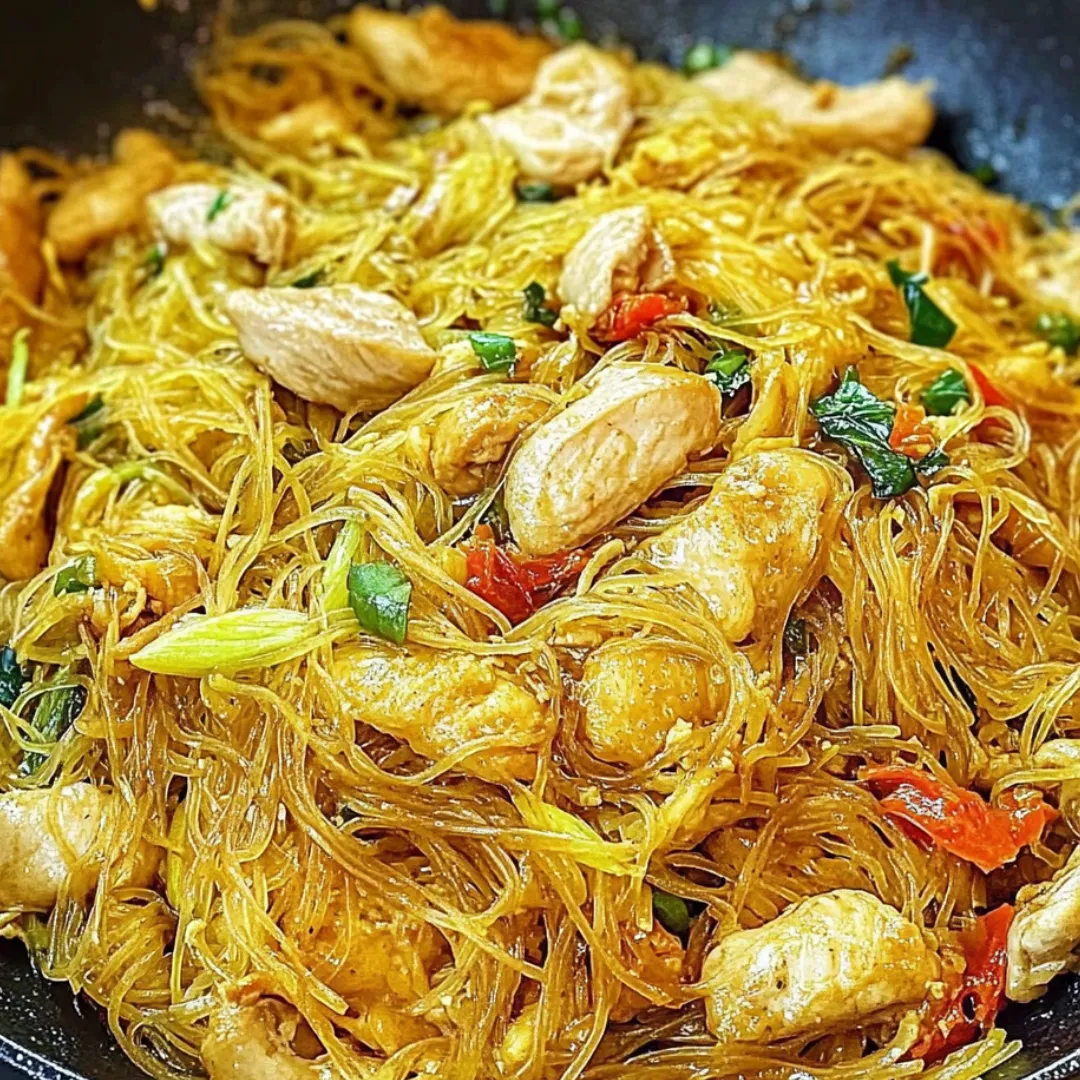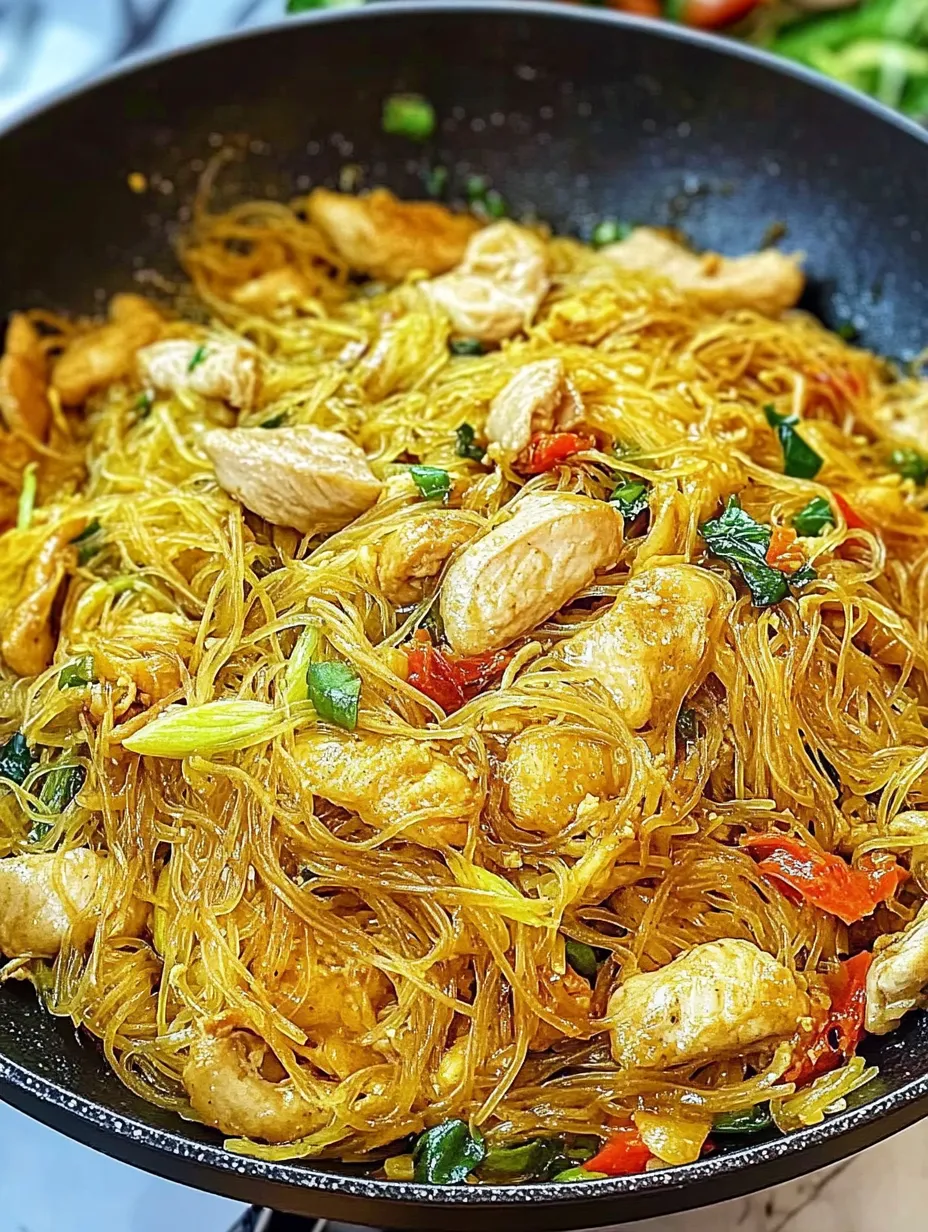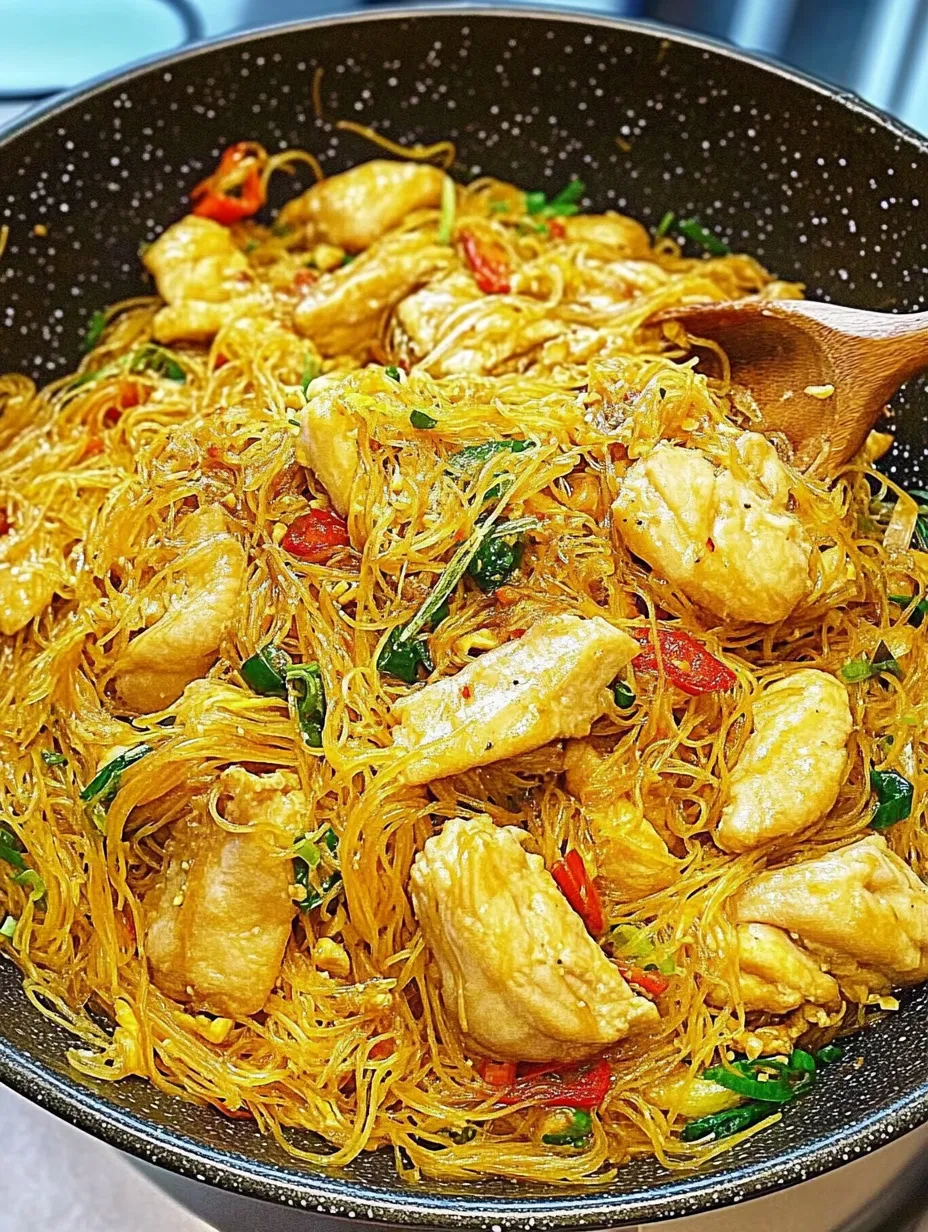 Pin it
Pin it
Singapore Noodles are a weeknight favorite in my house bringing together rice noodles tender chicken juicy shrimp and crisp veggies tossed in a curry-scented sauce. This dish never fails to satisfy when I crave bold flavors and a comforting bite all in one bowl. Whether you are cooking for friends or want a quick dinner with leftovers for lunch Singapore Noodles deliver every time.
Every time I make this dish it disappears fast. I first tried it after a long day needing something both quick and packed with flavor. Now it is my go-to when I want an impressive meal that does not take much fuss.
Ingredients
- Rice vermicelli noodles: choose thin varieties for the classic chewy texture and soak just until tender
- Vegetable oil: necessary for high-heat stir-frying and prevents sticking use a neutral oil like canola or sunflower
- Garlic and fresh ginger: both bring fragrant complexity always use fresh for maximum flavor
- Large onion: adds sweetness and depth to the base
- Red bell pepper: brings vibrant color and a crisp bite choose peppers that are glossy and firm
- Carrots: add crunch and natural sweetness slice thinly for even cooking
- Large eggs: create richness and extra protein always beat them before cooking for fluffy texture
- Boneless skinless chicken breast: offers lean protein slice thinly for quick cooking
- Large shrimp: choose peeled and deveined ones for convenience and a juicy bite
- Curry powder: this is the signature spice blend look for a fresh fragrant blend for best color and flavor
- Soy sauce: provides salty umami make sure to use a good quality one for depth
- Oyster sauce: adds a subtle sweetness and an extra layer of savory make sure it is fresh for best flavor
- Rice vinegar: brightens the flavors with gentle tang opt for unseasoned to control salt
- Sugar: just a touch balances the spice and umami a simple pantry staple
- Green onions: bring freshness and a mild bite slice thinly for garnish or stirring in
- Fresh cilantro for garnish: adds herby pop and color choose perky leaves
- Lime wedges: serving on the side for a final burst of zesty brightness
Step-by-Step Instructions
- Soak the Noodles:
- Place rice vermicelli noodles in a large bowl and cover with hot water. Soak for about five minutes or until the noodles are tender but still firm to the bite. Keep a close eye so they do not get mushy. Drain and set aside.
- Make the Sauce:
- In a small bowl combine soy sauce oyster sauce rice vinegar and sugar. Whisk well to dissolve the sugar completely. Set aside so it’s ready to go.
- Cook the Chicken and Shrimp:
- Heat half the vegetable oil in a large skillet or wok over medium-high heat. Add sliced chicken breast and stir-fry for about three to four minutes until nearly cooked through. Add shrimp and cook for another two to three minutes until pink. Remove both from the pan setting them aside on a plate.
- Sauté Aromatics:
- Add the remaining oil to the pan and let it heat until shimmering. Add minced garlic and ginger and cook for thirty seconds until fragrant. This step builds the flavor foundation for the whole dish.
- Stir Fry the Vegetables:
- Toss in the sliced onion red bell pepper and julienned carrots. Stir-fry for about five minutes until the veggies are tender yet still crisp with bright colors.
- Scramble the Eggs:
- Push vegetables to one side of the skillet and pour beaten eggs into the empty space. Gently scramble until fully cooked then mix with the vegetables.
- Combine Noodles and Protein:
- Add the soaked drained noodles along with cooked chicken and shrimp back into the skillet. Sprinkle curry powder across the noodles and toss everything well so curry coats evenly.
- Add Sauce and Finish:
- Pour in prepared sauce stirring and tossing to coat all ingredients thoroughly. Add sliced green onions mixing for another one to two minutes until everything is hot and well combined.
- Garnish and Serve:
- Top with fresh chopped cilantro and serve immediately with lime wedges on the side for squeezing.
 Pin it
Pin it
My favorite part is the tangle of curry-scented noodles they soak up the sauce so perfectly. Once my family crowded the counter just waiting for the first bowl to cool and I could hardly get them plated fast enough.
Storage Tips
Store any leftovers in an airtight container in the fridge for up to four days. The noodles reheat best in a skillet with a splash of water to loosen them up and restore their chewy bite. Avoid microwaving for too long as rice noodles can toughen.
Ingredient Substitutions
Swap out chicken and shrimp for tofu or extra veggies to make this vegetarian. Add snap peas snow peas or baby bok choy for more color and crunch. For a gluten-free spin use tamari in place of soy sauce and confirm all sauces are certified gluten-free.
Serving Suggestions
Singapore Noodles are delicious all on their own but I love to serve them with a simple cucumber salad or a side of steamed edamame for extra greens. If you are feeding a crowd offer bowls family-style with extra lime wedges and chili sauce on the side.
 Pin it
Pin it
Cultural and Historical Context
Despite the name this dish is more closely tied to Cantonese restaurants than to Singapore. It became popular in Hong Kong and abroad as a way to showcase the bright flavors of curry and fresh vegetables with approachable stir-frying techniques. Now it is a staple at many Chinese takeout spots worldwide yet just as easy to make at home.
Frequently Asked Questions
- → Can I substitute chicken or shrimp with other proteins?
Absolutely. Try tofu for a vegetarian take or swap with beef or pork slices. Just adjust cook times so proteins stay tender.
- → How do I keep rice vermicelli from turning mushy?
Soak noodles just until tender and still slightly firm. Avoid over-soaking; rinse in cold water if needed to stop further cooking.
- → Is a wok necessary or can I use a skillet?
A wok’s even heat is ideal, but a large, heavy skillet works well too. The key is high heat and enough space to toss ingredients.
- → What’s the best way to reheat leftovers?
Warm leftovers in a skillet with a splash of water over medium heat, stirring gently to prevent noodles from drying out.
- → How can I make this less spicy?
Use mild curry powder or reduce its quantity. Skip adding extra pepper or spicy sauces to the stir-fry.
- → What vegetables can I add or substitute?
Snap peas, snow peas, or mushrooms work great. Use what’s fresh and adjust stir-fry time based on desired tenderness.
